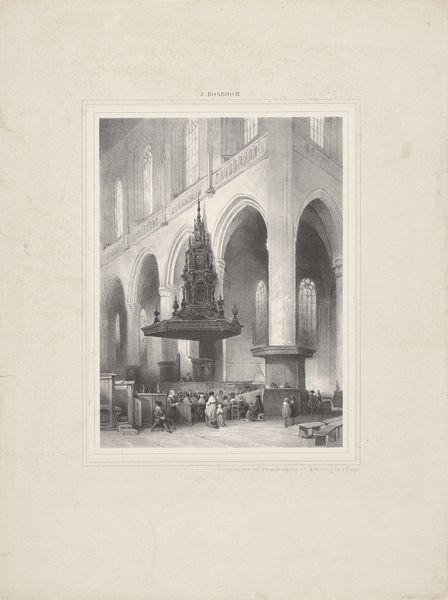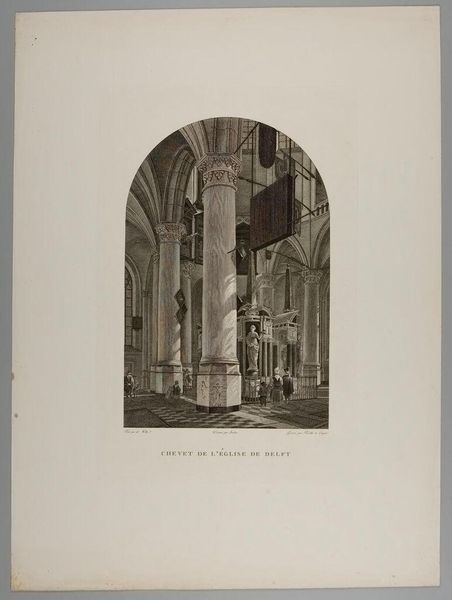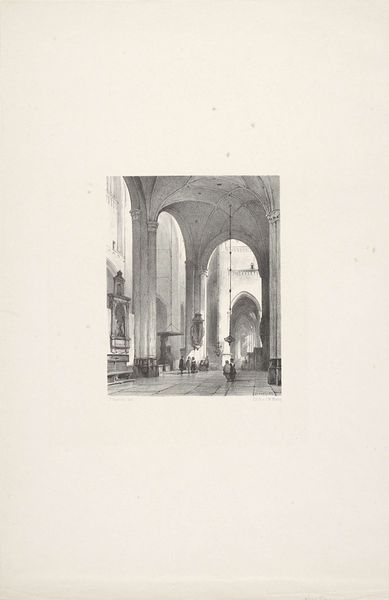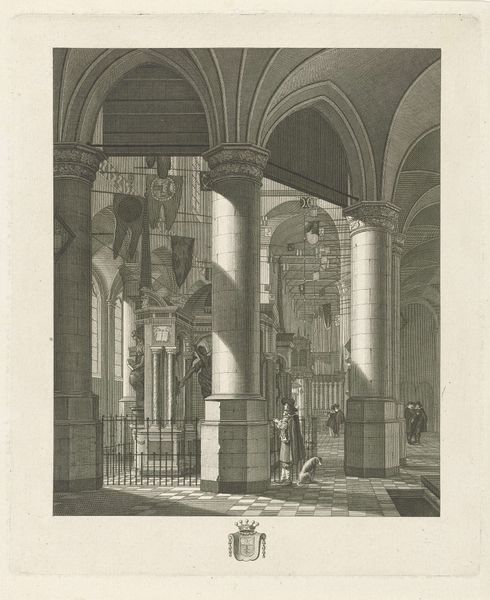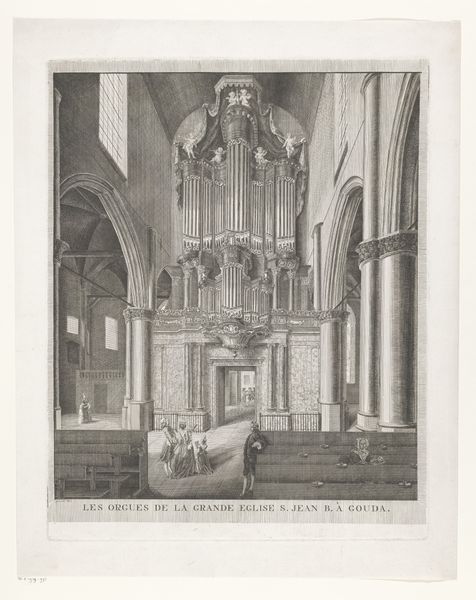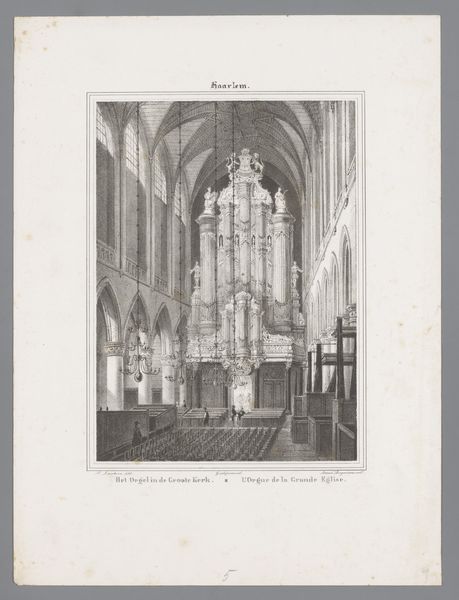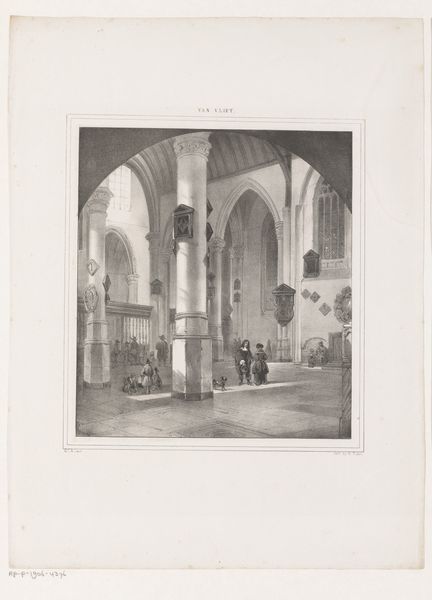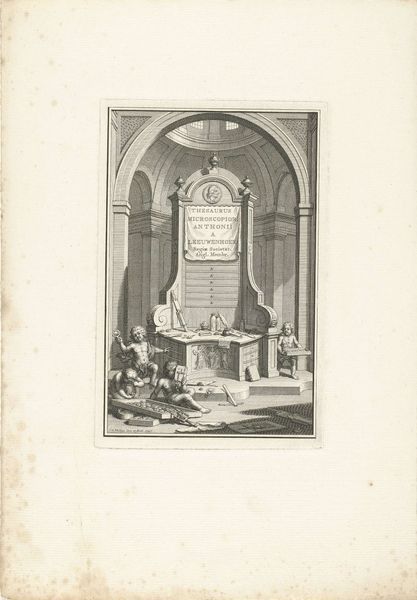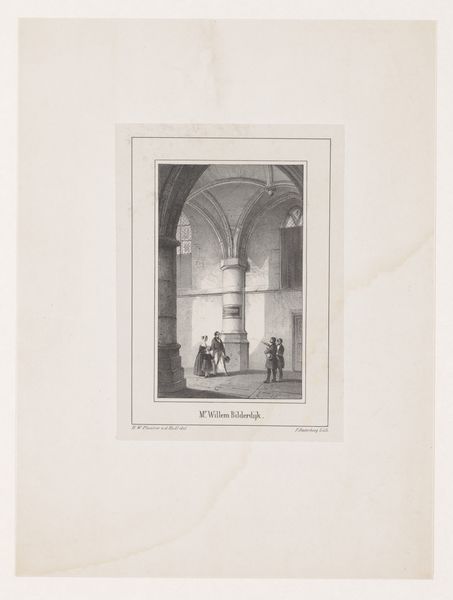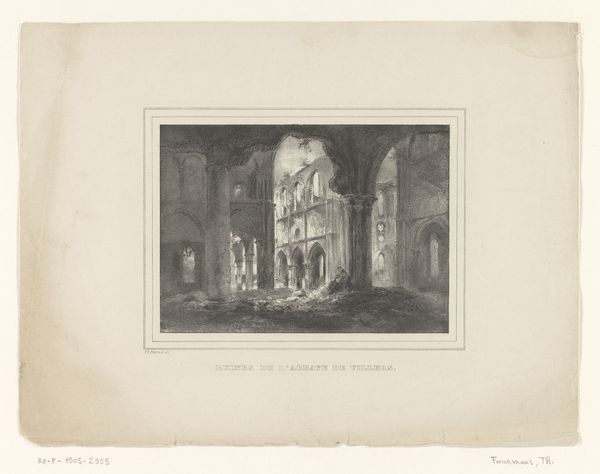
Graftombe van Willem I, prins van Oranje, 1623 1827 - 1871
0:00
0:00
print, etching, engraving, architecture
#
neoclacissism
# print
#
etching
#
old engraving style
#
landscape
#
archive photography
#
history-painting
#
engraving
#
architecture
Dimensions: height 539 mm, width 368 mm
Copyright: Rijks Museum: Open Domain
Curator: This print by Carel Christiaan Antony Last, dating from the mid-19th century, depicts the Tomb of William I, Prince of Orange, dating back to 1623. Editor: It's a rather imposing interior. The arches and colossal columns give a sense of solemn grandeur, almost as if we're peering back in time through an archive photo. Curator: Last captured the monument within its architectural setting at Nieuwe Kerk in Delft, a setting of immense socio-political significance. Think about the power that’s communicated when civic leaders and members of the royal family gathered there. Editor: Absolutely. And look at how the figures at the base of the tomb are dwarfed, underscoring not only William the Silent's power, but the power of the House of Orange. One could examine how these figures and tomb’s iconography project particular nationalistic values in this historical context. Curator: This etching, executed with meticulous detail, aligns with Neoclassical aesthetics, seeking to represent history with clarity and a certain idealised grandeur, don’t you think? The artist consciously chose to mimic older engraving styles for added impact. Editor: In relation to your point about its clarity, it appears that its clear representational quality creates its own sort of opacity by concealing or obfuscating particular historical nuances in favor of an idyllic Neoclassical version of national identity. Curator: And the choice of rendering it as a print accessible to a wider audience should not be ignored. How the Dutch royal image was consumed has definite class dimensions. Editor: Precisely. I think unpacking Last's image shows us a powerful intersection between national identity and popular sentiment during that era. This rendering and its distribution tell a very specific story of how the Prince of Orange's memory was received. Curator: The image resonates because it shows how social and political narratives shape how we, and those who came before us, view both history and the role of art itself in shaping collective memory. Editor: Indeed. Reflecting on Last's etching makes one keenly aware that how a country remembers is perhaps just as important as what it chooses to remember.
Comments
No comments
Be the first to comment and join the conversation on the ultimate creative platform.
